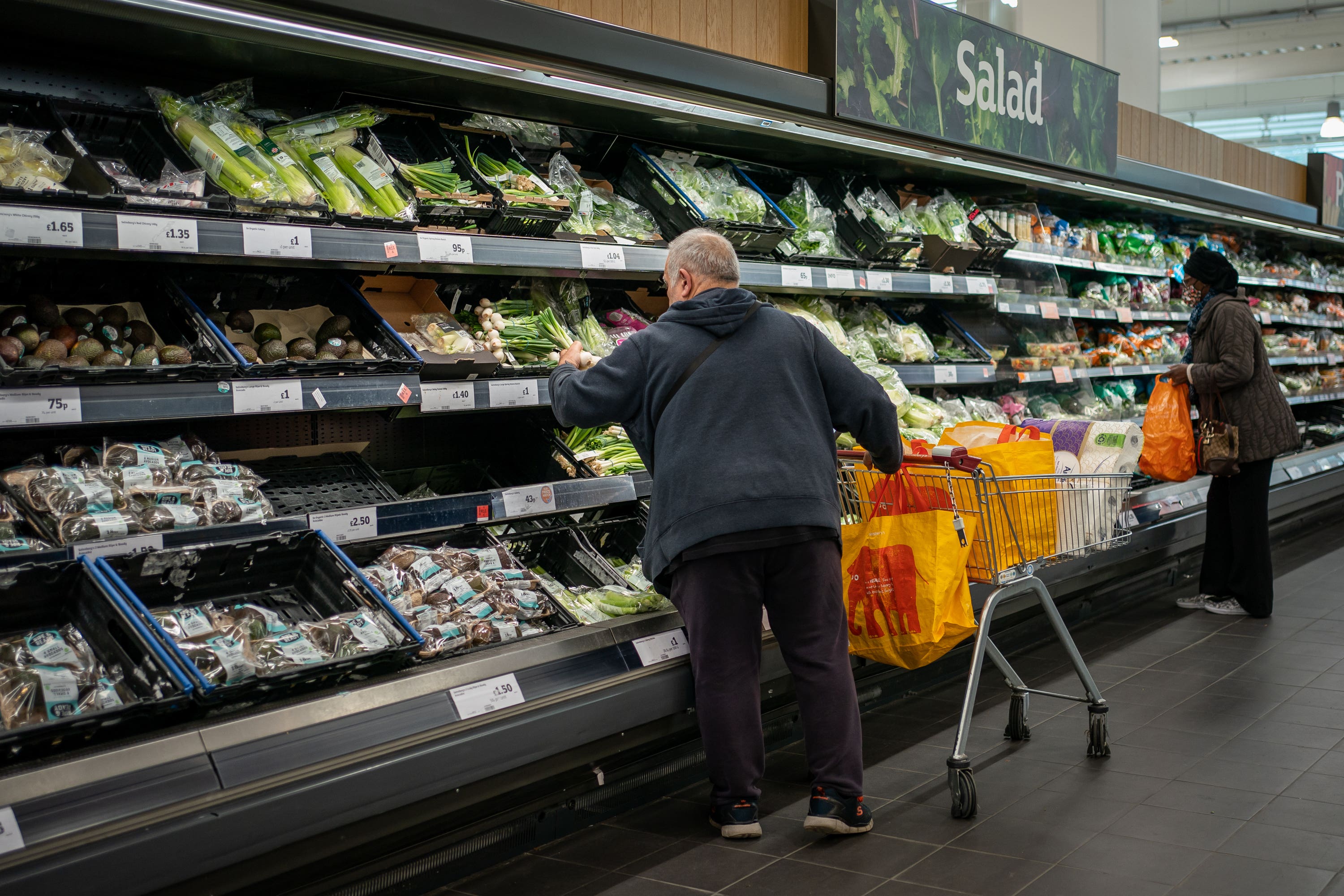Grocery inflation sees fastest monthly drop as households spend all-time high
Grocery prices are now 6.7% higher than a year ago, a plunge from November’s inflation of 9.1%, analysts Kantar reported.

Your support helps us to tell the story
From reproductive rights to climate change to Big Tech, The Independent is on the ground when the story is developing. Whether it's investigating the financials of Elon Musk's pro-Trump PAC or producing our latest documentary, 'The A Word', which shines a light on the American women fighting for reproductive rights, we know how important it is to parse out the facts from the messaging.
At such a critical moment in US history, we need reporters on the ground. Your donation allows us to keep sending journalists to speak to both sides of the story.
The Independent is trusted by Americans across the entire political spectrum. And unlike many other quality news outlets, we choose not to lock Americans out of our reporting and analysis with paywalls. We believe quality journalism should be available to everyone, paid for by those who can afford it.
Your support makes all the difference.Supermarket inflation has seen its fastest monthly drop on record as the average household spent an all-time high of £477 on groceries over December, figures show.
Grocery prices are now 6.7% higher than a year ago, the lowest level since April 2022 and a plunge from November’s inflation of 9.1%, analysts Kantar reported.
It came as supermarkets experienced their busiest Christmas since 2019, with Britons making 488 million trips to the supermarkets over the four weeks to December 24 – 12 million more than the year before – and sending a record £13.7 billion through the tills.
The average household spent £28 more on groceries across than month than in December 2022, with total take-home sales up 7% in value and the number of items bought up 2%.
December 22 was the most popular shopping day, when just over 25 million trips were made and consumers spent £803 million in physical stores – 85% more than the average Friday in 2023.
Online’s share of the market held steady at 11.6%, as nearly one in five households received a delivery in preparation for Christmas Day.
Consumer appetite for the traditional Christmas dinner was particularly strong, with sales volumes of parsnips, sprouts and potatoes up 12%, 9% and 8% respectively, sales of chilled gravy up by 11% and festive meat including pigs in blankets, sausages, hams and turkeys up by 6% collectively.
However, mince pies and Christmas puddings bucked the trend, with sales volumes falling by 4% and 7% respectively – although fresh cream was up by 5% across the month, suggesting dessert remained on the menu.
Fraser McKevitt, head of retail and consumer insight at Kantar, said: “The rate of inflation is coming down at the fastest pace we have ever recorded, but consumers are still facing pretty hefty pressures on their budgets.
“Retailers were clearly working hard during the festive period to offer best value and win over shoppers, and promotions were central to their strategy.
“Nearly one third of all spend in the four weeks to Christmas Eve was made on items with some kind of offer, the highest level since December 2020 and £823 million more than last year.”
Tesco, Sainsbury’s, Asda, Morrisons and Waitrose accounted for a combined market share of 70% over the quarter to December 24.
Supermarkets saw especially strong performances for their own-label lines, with sales of premium ranges like Sainsbury’s Taste the Difference and Tesco Finest surging by 11.9% compared with last year to hit £790 million, accounting for 5.7% of all grocery sales.